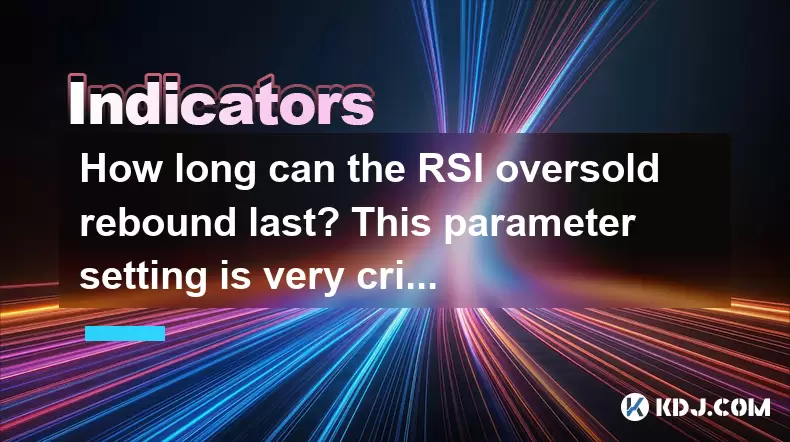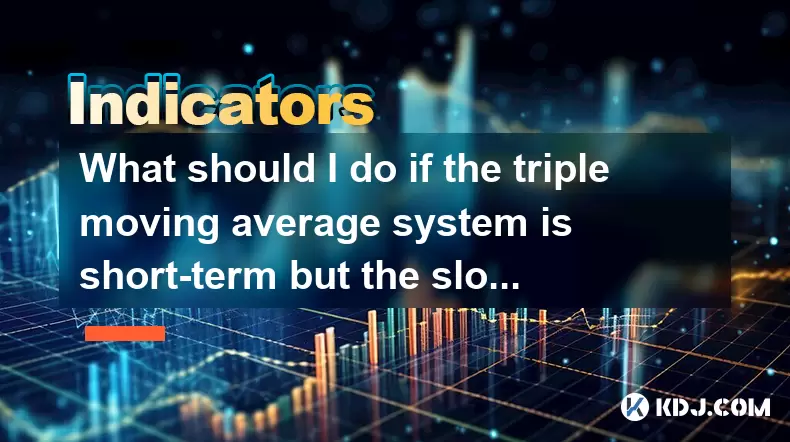-
 Bitcoin
Bitcoin $106,754.6083
1.33% -
 Ethereum
Ethereum $2,625.8249
3.80% -
 Tether USDt
Tether USDt $1.0001
-0.03% -
 XRP
XRP $2.1891
1.67% -
 BNB
BNB $654.5220
0.66% -
 Solana
Solana $156.9428
7.28% -
 USDC
USDC $0.9998
0.00% -
 Dogecoin
Dogecoin $0.1780
1.14% -
 TRON
TRON $0.2706
-0.16% -
 Cardano
Cardano $0.6470
2.77% -
 Hyperliquid
Hyperliquid $44.6467
10.24% -
 Sui
Sui $3.1128
3.86% -
 Bitcoin Cash
Bitcoin Cash $455.7646
3.00% -
 Chainlink
Chainlink $13.6858
4.08% -
 UNUS SED LEO
UNUS SED LEO $9.2682
0.21% -
 Avalanche
Avalanche $19.7433
3.79% -
 Stellar
Stellar $0.2616
1.64% -
 Toncoin
Toncoin $3.0222
2.19% -
 Shiba Inu
Shiba Inu $0.0...01220
1.49% -
 Hedera
Hedera $0.1580
2.75% -
 Litecoin
Litecoin $87.4964
2.29% -
 Polkadot
Polkadot $3.8958
3.05% -
 Ethena USDe
Ethena USDe $1.0000
-0.04% -
 Monero
Monero $317.2263
0.26% -
 Bitget Token
Bitget Token $4.5985
1.68% -
 Dai
Dai $0.9999
0.00% -
 Pepe
Pepe $0.0...01140
2.44% -
 Uniswap
Uniswap $7.6065
5.29% -
 Pi
Pi $0.6042
-2.00% -
 Aave
Aave $289.6343
6.02%
How long can the RSI oversold rebound last? This parameter setting is very critical!
The RSI oversold rebound in crypto trading signals potential price recovery, but its duration depends on market dynamics, volume, and confirmation from other indicators like moving averages or candlestick patterns.
Jun 17, 2025 at 09:49 am

Understanding RSI and Its Role in Trading
The Relative Strength Index (RSI) is a momentum oscillator used to measure the speed and change of price movements. It typically ranges from 0 to 100, with levels below 30 indicating oversold conditions and above 70 signaling overbought territory. Traders often use RSI to identify potential reversal points in the market. In cryptocurrency trading, where volatility is high, understanding how long an RSI oversold rebound can last becomes crucial.
RSI helps traders anticipate when an asset might be temporarily undervalued or overvalued.
In the context of crypto markets, which are known for sudden spikes and crashes, correctly interpreting RSI signals can make the difference between a profitable trade and a significant loss.
What Happens During an Oversold Rebound?
When an asset enters oversold territory (RSI < 30), it suggests that selling pressure has been strong and sustained. However, this doesn't always mean an immediate reversal will occur. The oversold rebound refers to the price movement that follows such a condition — either a short-term bounce or a longer correction.
- Short-term rebounds may last only a few hours or one trading session.
- Medium-term recoveries can persist for days depending on market sentiment and volume.
- Extended rebounds may evolve into new trends if fundamental or macro factors support the move.
It's important to note that the duration of the rebound is not solely determined by the RSI crossing above 30 but also depends on other indicators and market dynamics.
Why Parameter Settings Matter
The default setting for RSI is usually 14 periods, which works well in many scenarios. However, in fast-moving crypto markets, adjusting this parameter can significantly impact how signals are interpreted.
- A shorter period (e.g., 7) makes RSI more sensitive to recent price changes, potentially leading to earlier entry signals.
- A longer period (e.g., 21) smooths out volatility, reducing false signals but possibly delaying entries.
Choosing the right setting depends on your trading style:
- Day traders may prefer faster settings.
- Swing traders might opt for slower, more reliable readings.
Misjudging the RSI parameters could result in entering a rebound too early or missing it entirely.
How to Confirm an Oversold Rebound
Relying solely on RSI for decision-making can lead to misleading conclusions. To increase accuracy, traders should combine RSI with other tools:
- Volume analysis: A surge in volume during an RSI rebound often confirms genuine strength.
- Moving averages: If the price crosses above key moving averages after an oversold signal, it strengthens the case for a rebound.
- Candlestick patterns: Bullish formations like hammer or engulfing candles near oversold levels add confluence.
These additional layers of confirmation help distinguish between a temporary bounce and a sustainable trend.
Practical Steps to Analyze RSI Rebounds
To effectively assess how long an RSI oversold rebound might last, follow these detailed steps:
- Step 1: Set your preferred RSI period based on your trading strategy and time frame.
- Step 2: Monitor RSI values closely and mark when they fall below 30.
- Step 3: Observe whether the price begins to stabilize or show signs of reversal after hitting oversold levels.
- Step 4: Check volume data to see if buying interest is increasing alongside the RSI rebound.
- Step 5: Cross-reference with other technical indicators like MACD or Bollinger Bands to confirm strength.
By following this structured approach, you can better gauge the sustainability of a rebound and avoid premature exits or entries.
Frequently Asked Questions
Q: Can RSI stay oversold for a long time?
Yes, especially during strong downtrends or bear markets. RSI can remain below 30 for extended periods without necessarily signaling a reversal. This phenomenon is known as "RSI divergence failure" and highlights the importance of using complementary tools.
Q: Does the RSI rebound work equally well across all cryptocurrencies?
No, performance varies depending on liquidity, market cap, and overall volatility. Large-cap assets like Bitcoin or Ethereum tend to produce more reliable RSI signals than smaller altcoins.
Q: Should I adjust RSI settings for different time frames?
Absolutely. Shorter time frames (like 1-hour or 15-minute charts) benefit from lower RSI periods (e.g., 7 or 10). Longer time frames (daily or weekly) work better with higher periods (e.g., 21 or 30) to filter out noise.
Q: What does it mean if RSI rebounds but price doesn't follow?
This could indicate a fakeout or weak buying pressure. It's essential to look at price action and volume to determine whether the rebound is genuine or just a trap set by larger players in the market.
Disclaimer:info@kdj.com
The information provided is not trading advice. kdj.com does not assume any responsibility for any investments made based on the information provided in this article. Cryptocurrencies are highly volatile and it is highly recommended that you invest with caution after thorough research!
If you believe that the content used on this website infringes your copyright, please contact us immediately (info@kdj.com) and we will delete it promptly.
- 2025-W Uncirculated American Gold Eagle and Dr. Vera Rubin Quarter Mark New Products
- 2025-06-13 06:25:13
- Ruvi AI (RVU) Leverages Blockchain and Artificial Intelligence to Disrupt Marketing, Entertainment, and Finance
- 2025-06-13 07:05:12
- H100 Group AB Raises 101 Million SEK (Approximately $10.6 Million) to Bolster Bitcoin Reserves
- 2025-06-13 06:25:13
- Galaxy Digital CEO Mike Novogratz Says Bitcoin Will Replace Gold and Go to $1,000,000
- 2025-06-13 06:45:13
- Trust Wallet Token (TWT) Price Drops 5.7% as RWA Integration Plans Ignite Excitement
- 2025-06-13 06:45:13
- Ethereum (ETH) Is in the Second Phase of a Three-Stage Market Cycle
- 2025-06-13 07:25:13
Related knowledge

How to interpret the low opening the next day after the long lower shadow hits the bottom?
Jun 18,2025 at 12:22am
Understanding the Long Lower Shadow Candlestick PatternIn technical analysis, a long lower shadow candlestick is often seen as a potential reversal signal in a downtrend. This pattern occurs when the price opens, trades significantly lower during the session, but then recovers to close near the opening price or slightly above. The long wick at the botto...

How to operate the RSI indicator repeatedly in the 40-60 range?
Jun 18,2025 at 12:56am
Understanding the RSI Indicator and Its RelevanceThe Relative Strength Index (RSI) is a momentum oscillator widely used in cryptocurrency trading to measure the speed and change of price movements. Typically, the RSI ranges from 0 to 100, with levels above 70 considered overbought and below 30 considered oversold. However, when the RSI repeatedly stays ...

Why is the volume ratio suddenly enlarged three times but the price fluctuation is small?
Jun 18,2025 at 04:42am
Understanding the Relationship Between Trading Volume and Price MovementIn the world of cryptocurrency trading, volume is a crucial metric that reflects the number of assets traded within a specific time frame. It often serves as an indicator of market interest and liquidity. However, there are instances where trading volume surges dramatically—sometime...

How strong is the MACD golden cross below the zero axis?
Jun 17,2025 at 11:00pm
Understanding the MACD Indicator in Cryptocurrency TradingThe Moving Average Convergence Divergence (MACD) is one of the most widely used technical indicators among cryptocurrency traders. It helps identify potential trend reversals, momentum shifts, and entry or exit points. The MACD consists of three main components: the MACD line, the signal line, an...

What should I do if the triple moving average system is short-term but the slope slows down?
Jun 18,2025 at 04:35am
Understanding the Triple Moving Average SystemThe triple moving average system is a popular technical analysis tool used in cryptocurrency trading. It involves using three different moving averages—typically the short-term (e.g., 10-period), medium-term (e.g., 20-period), and long-term (e.g., 50-period) moving averages. When the short-term average cross...

How effective is the golden cross of the William indicator double line in the oversold area?
Jun 17,2025 at 11:56pm
Understanding the William Indicator and Its Double Line SetupThe William %R (Williams Percent Range) is a momentum oscillator used to identify overbought or oversold conditions in a market. It ranges from 0 to -100, with readings above -20 considered overbought and below -80 deemed oversold. The double line setup refers to plotting two different timefra...

How to interpret the low opening the next day after the long lower shadow hits the bottom?
Jun 18,2025 at 12:22am
Understanding the Long Lower Shadow Candlestick PatternIn technical analysis, a long lower shadow candlestick is often seen as a potential reversal signal in a downtrend. This pattern occurs when the price opens, trades significantly lower during the session, but then recovers to close near the opening price or slightly above. The long wick at the botto...

How to operate the RSI indicator repeatedly in the 40-60 range?
Jun 18,2025 at 12:56am
Understanding the RSI Indicator and Its RelevanceThe Relative Strength Index (RSI) is a momentum oscillator widely used in cryptocurrency trading to measure the speed and change of price movements. Typically, the RSI ranges from 0 to 100, with levels above 70 considered overbought and below 30 considered oversold. However, when the RSI repeatedly stays ...

Why is the volume ratio suddenly enlarged three times but the price fluctuation is small?
Jun 18,2025 at 04:42am
Understanding the Relationship Between Trading Volume and Price MovementIn the world of cryptocurrency trading, volume is a crucial metric that reflects the number of assets traded within a specific time frame. It often serves as an indicator of market interest and liquidity. However, there are instances where trading volume surges dramatically—sometime...

How strong is the MACD golden cross below the zero axis?
Jun 17,2025 at 11:00pm
Understanding the MACD Indicator in Cryptocurrency TradingThe Moving Average Convergence Divergence (MACD) is one of the most widely used technical indicators among cryptocurrency traders. It helps identify potential trend reversals, momentum shifts, and entry or exit points. The MACD consists of three main components: the MACD line, the signal line, an...

What should I do if the triple moving average system is short-term but the slope slows down?
Jun 18,2025 at 04:35am
Understanding the Triple Moving Average SystemThe triple moving average system is a popular technical analysis tool used in cryptocurrency trading. It involves using three different moving averages—typically the short-term (e.g., 10-period), medium-term (e.g., 20-period), and long-term (e.g., 50-period) moving averages. When the short-term average cross...

How effective is the golden cross of the William indicator double line in the oversold area?
Jun 17,2025 at 11:56pm
Understanding the William Indicator and Its Double Line SetupThe William %R (Williams Percent Range) is a momentum oscillator used to identify overbought or oversold conditions in a market. It ranges from 0 to -100, with readings above -20 considered overbought and below -80 deemed oversold. The double line setup refers to plotting two different timefra...
See all articles

























































































